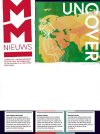
Of all the sectors within the leisure industries, the sector of themed entertainment might be the most capital intensive. Annually, the sector invests billions of dollars into novel developments to attract more and more visitors. Although these large-scale investments do occur because of aspired revenues and shareholder value, arguably, most of these investments are made with philanthropic intentions as well: to make people happy (Cornelis, 2017). Making people happy is a phrase that is not unfamiliar within themed entertainment. Various organizations even include it in their mission statements, such as Walt Disney Parks, Experiences and Consumer Products (“We create happiness by providing the finest in entertainment for people of all ages, everywhere.”) and Attractiepark Toverland (“Creating magical moments of happiness.”).
Traditionally, theme parks have always been associated with fun and excitement. Positive psychology has shown that such emotions do indeed contribute to well-being. Yet, although fun and excitement are still at the core of their experiencescape, theme parks employ several other strategies for happiness beyond providing “mere” fun and excitement. Amongst them are the production of meaning, ensuring escapism and offering innovative hospitality systems.
Positive and optimistic themes
In order to understand the concept of meaning production, one must distinguish between theme parks on the one hand and amusement parks on the other. Amusement parks tend to focus on direct hedonistic effects through a vast array of ride systems, whereas theme parks tend to focus on communicating a certain theme through a small number of attractions in large-scale, designed environments (Cornelis, 2017). As Joe Rohde, creative lead of Disney’s Animal Kingdom, suggests, the concept of theme is often misunderstood. The word theme is often used as in “[being] decorated to look like something” (Rohde, 2019). An example would be that “this collection of buildings is themed to look like a Western village.” As Rohde (2019) continues, theme rather refers to “the idea that brings unity to a creative work”, much like in a book report where you are asked to reflect on the theme of a story. Themes do therefore not refer to such things as “a Western village”, but rather refer to underlying value systems that bind everything together through a shared meaning. It is exactly here where theme parks connect with happiness and well-being. Their themes often focus on positive concepts, such as hope and romanticism. Most of Disney’s parks are built around the theme of reassurance: the notion that all your fears or doubts are taken away and that all will be right in the end (Haas, 1978). That is why environments in these parks always evoke a sense of harmony and optimism. Also, Disney’s attractions tend to end on a positive note: during the attraction you might be exposed to a threat, but near the end the threat is always taken away (Haas, 1978).
Wim Strijbosch:
Theme parks deliberately employ strategies of escapism for their guests to recharge their mental batteries.Other theme parks employ positive themes as well. Efteling, for example, tends to focus on themes of romanticism and nostalgia, outed in the particular settings and styles as designed and inspired by Anton Pieck. Recent additions of Attractiepark Toverland have all been designed around themes of hope and love. Toverland’s Magical Valley area, for example, is designed as the habitat of the fictitious people of “Dwervels”, who symbolize a world that still allows for love and peace. Toverland’s Port Laguna offers an idyllic Mediterraneanstyle harbor with warm colors, relaxing music and holiday-like settings to evoke a sense of warmth and carelessness. Thus, besides generating direct effects of fun and excitement, theme parks also appeal to happiness and well-being on a deeper level by producing positive meaning from optimistic themes.
Escaping the world out there
Experiencing a sense of escapism during leisure activities leads people to perceive these leisure activities as enhancing their quality of life and hence their well-being (Hwang & Lyu, 2015). Providing this sense of escapism is exactly what is in the nature of theme parks. Efteling, for example, has always offered natural environments for guests to escape the worries and hassles from everyday life. Today, a core element in Efteling’s vision for 2030 still consists of this very purpose: “In everything we do, we allow our guests to escape from everyday reality and to stimulate their wonderment.” This vision results in a policy where Efteling allows itself a maximum development rate of 11% only. 89% of Efteling’s parcels remain allocated to nature, thus ensuring their pursuit of providing escapism. Besides these in-park environments, theme parks also consciously design their borders, both mentally and visually. Attractiepark Toverland’s entrance is deliberately designed as a border post where you leave the Netherlands and enter a magical realm. Disney constructs large berms around its castle parks, topped with tall trees in order to keep guests’ sightlines within the park. In this way, tall real-world structures from outside remain hidden from in-park views. For guests, there is only one way through this berm: the park’s entrance. Above all entrances of Disney’s castle parks, a plaque reads “Here you leave today and enter the world of yesterday, tomorrow and fantasy.” Besides the physical border crossing of going under the berm, mentally, the entrance serves as a portal to escape from the real world as well. In sum, theme parks deliberately employ strategies of escapism for their guests so as to recharge their mental batteries for well-being in the longer run, both through in-park environments, as well as through the use of the physical and mental borders surrounding them.
Innovative hospitality concepts
 Theme parks are certainly more than escapist landscapes with themed attractions only. Each day, millions of theme park employees worldwide put their hospitality skills to the test. Most parks use their very own training programs to educate employees in terms of hospitality. On top of that, recent guest experience enhancement initiatives have integrated state-of-the-art technology in order to develop innovative hospitality concepts. Efteling, for example, has recently developed its Boarding Pass system at Python rollercoaster, where a mobile application can reserve a spot in the attraction at a given timeslot, thus making optimal use of its capacity. Another recent development is the display of real-time queueing times in mobile applications, which allows parks to spread their crowds towards attractions with low queueing times. The most impressive example of hospitality innovation is perhaps that of Disney’s MyMagic+ system, at the core of which is a simple-looking RFID bracelet. Guests use this bracelet to enter the parks and their hotel room, as a payment device, and to store their FastPasses, restaurant reservations and on-ride attraction photos. Besides the replacement of numerous disposables (tickets, room keys, receipts) and exploiting planned reservations to lower queueing time in both attractions and restaurants, the behind-the-scenes benefit is that these bracelets provide Disney with vast amounts of big data on guest behavior, to optimize their operations even further. These examples show that the theme park industry is certainly ahead when it comes to innovative approaches towards optimizing operational processes. Other sectors within the leisure field could certainly be inspired by these efforts, because if done well, it might certainly remove some of the seemingly inevitable hassles and dissatisfiers, thus contributing to happiness and well-being in its very own way.
Theme parks are certainly more than escapist landscapes with themed attractions only. Each day, millions of theme park employees worldwide put their hospitality skills to the test. Most parks use their very own training programs to educate employees in terms of hospitality. On top of that, recent guest experience enhancement initiatives have integrated state-of-the-art technology in order to develop innovative hospitality concepts. Efteling, for example, has recently developed its Boarding Pass system at Python rollercoaster, where a mobile application can reserve a spot in the attraction at a given timeslot, thus making optimal use of its capacity. Another recent development is the display of real-time queueing times in mobile applications, which allows parks to spread their crowds towards attractions with low queueing times. The most impressive example of hospitality innovation is perhaps that of Disney’s MyMagic+ system, at the core of which is a simple-looking RFID bracelet. Guests use this bracelet to enter the parks and their hotel room, as a payment device, and to store their FastPasses, restaurant reservations and on-ride attraction photos. Besides the replacement of numerous disposables (tickets, room keys, receipts) and exploiting planned reservations to lower queueing time in both attractions and restaurants, the behind-the-scenes benefit is that these bracelets provide Disney with vast amounts of big data on guest behavior, to optimize their operations even further. These examples show that the theme park industry is certainly ahead when it comes to innovative approaches towards optimizing operational processes. Other sectors within the leisure field could certainly be inspired by these efforts, because if done well, it might certainly remove some of the seemingly inevitable hassles and dissatisfiers, thus contributing to happiness and well-being in its very own way.
Wim Strijbosch:
The most impressive example is perhaps that of Disney’s MyMagic+ system.Theme parks tap into leisure for a better world by appealing to happiness and well-being in numerous ways. Positive meaning production, ensuring escapism and various hospitality innovations are only a few of the various strategies that go beyond the fun and excitement that provide direct happiness in the first place. Fair enough – the direct kicks and thrills of record breaking attractions may certainly make you happier, but below the surface there is definitely more to theme parks which makes the world just a bit better.
References
- Cornelis, P. C. M. (2017). Investment thrills: managing risk and return for the amusement park & attractions industry. Nieuwegein: NRIT Media.
- Haas, C. (1978, 4 December). Disneyland is good for you. New West, 13-19.
- Hwang, J., & Lyu, S. O. (2015). The antecedents and consequences of well-being perception: An application of the experience economy to golf tournament tourists. Journal of Destination Marketing & Management, 4(4), 248-257.
- Rohde, J. (2019). Retrieved from https://www. instagram.com/p/BtgrvG7HV75/?hl=nl
NB: dit artikel verscheen eerder in het magazine Uncover ‘Leisure for a better world’ van Breda University of Applied Sciences.
